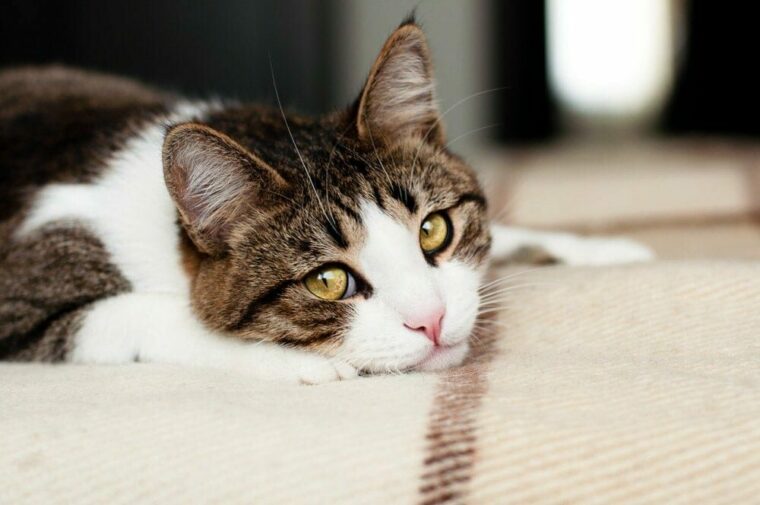
If your cat suddenly becomes lethargic, you may wonder if you should be concerned. Lethargy generally hits when cats aren’t feeling well, but it can also appear after vaccinations and is a sign of a serious condition such as heart or kidney disease.
Because lethargy can indicate an illness, contact your veterinarian if you notice it, particularly if you notice changes in your pet’s appetite or litter box habits. Keep reading for 14 reasons why cats are lethargic.
The 14 Reasons Your Cat is So Lethargic
1. Infections
Bacteria, viruses, and fungi can all cause infections, but fungal infections are relatively rare. Just like people, cats need more rest when fighting something off. It’s common for cats dealing with something like a respiratory infection to lose interest in food. Cat colds generally make kitties feel miserable for about 7 to 10 days. When viral infections don’t go away, they often end up causing secondary bacterial infections. Appetite loss is usually a sign that things are progressing in the wrong direction.
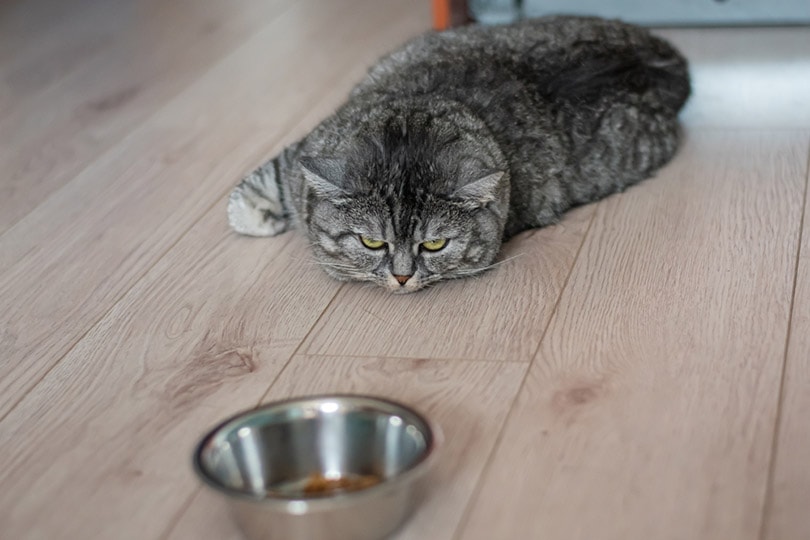
2. Vaccinations
Cats sometimes end up a bit under the weather after being vaccinated. Vaccinations trigger immune responses to specific pathogens, allowing your cat’s body to develop defenses against common viral and bacterial infections. Cats’ immune systems are better prepared to fight off those pathogens they’ve been vaccinated against. Kittens usually get their first shots around 6 or 8 weeks old. Adult cats generally require boosters every 1 to 3 years.
3. Pain
Serious pain often goes hand in hand with lethargy. Cats with chronic conditions that cause discomfort, such as osteoarthritis and dental disease, often hide signs they’re not feeling well, and it can be difficult to determine if your cat is feeling out of sorts. Cats suffering from osteoarthritis and other joint conditions often have difficulty grooming themselves and sometimes struggle to find comfortable ways to hold their bodies. Lack of appetite and reluctance to be handled can also indicate pain.
4. Recovery
Cats recovering from surgery, accidents, or illness often have far less energy than usual. It’s perfectly normal for cats to be lethargic for a few days after surgery or a significant accident—healing requires energy. It also takes a few days for cats being treated for bacterial infections with antibiotics to start feeling better. Keep an eye on your cat as they recover, and reach out to your veterinarian if your buddy starts having trouble eating or continues to be withdrawn and lethargic.
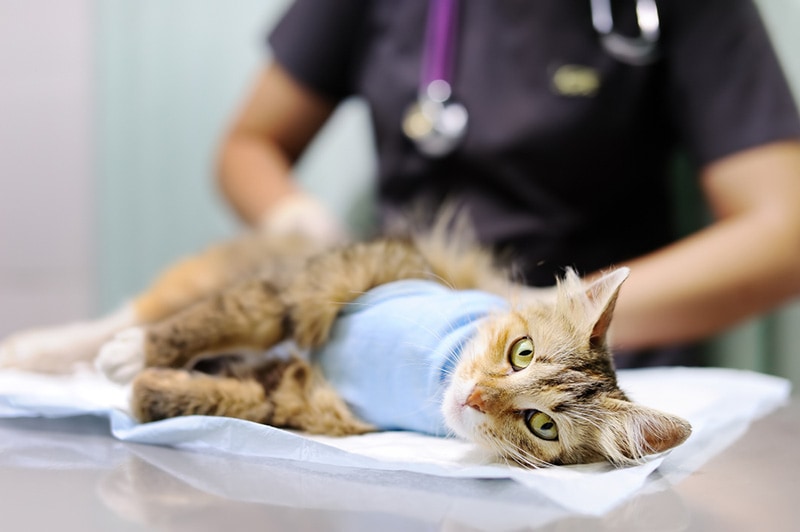
5. Heart Disease
Heart disease is a common cause of signs such as lethargy and difficulty breathing in cats. Weakness, restlessness, and vomiting can also occur. Cats with heart disease often become withdrawn and disinterested in food. Hypertrophic cardiomyopathy (HCM) is when at least one of the heart’s walls thickens, making it difficult to pump blood. It’s the most prevalent heart condition in adult cats. Maine Coon cats and Persian cats are at increased risk of developing HCM.
6. Respiratory Conditions
Bacteria, viruses, and fungi can cause respiratory infections. They usually spread quite easily in crowded conditions such as shelters. Signs of feline upper respiratory infections include coughing, sneezing, and discharge from the nose or eyes. Lower respiratory tract infections generally involve the lungs and the trachea. Rapid breathing, lethargy, and coughing are common signs in cats with lower respiratory tract infections. Feline viral rhinotracheitis (FVR) and feline calicivirus (FCV) are often responsible for upper respiratory tract infections.
7. Kidney and Liver Disease
Kidney and liver disease can both lead to lethargy in cats. The kidneys remove waste from the blood so it can be urinated out, and the livers are essential for metabolism and the removal of toxins. When either organ stops functioning optimally, waste and toxins build up in your cat’s body, often leading to lethargy. Cats with kidney disease often lose weight, vomit, and have inconsistent appetites. Signs of liver disease include jaundice, weight loss, and lack of appetite.
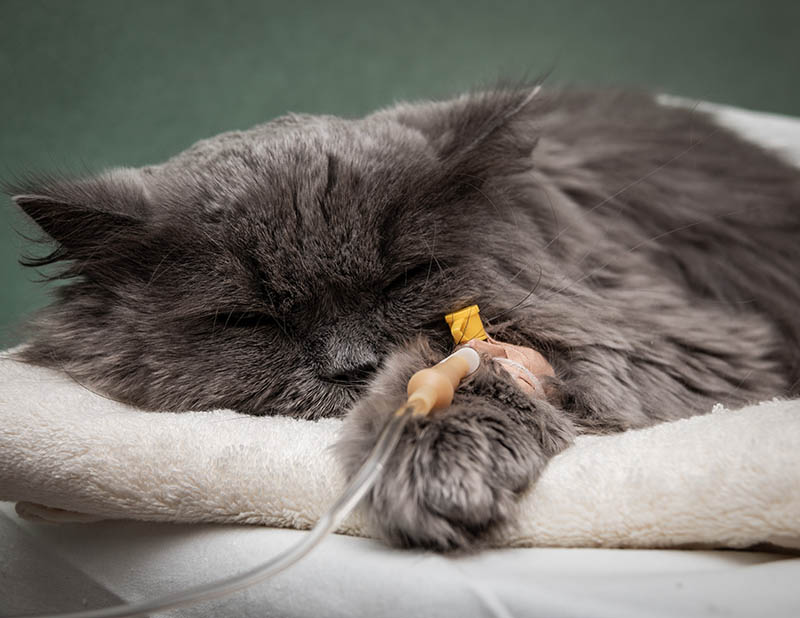
8. Cancer
Cancer is less common in cats than in dogs, but lymphoma is the most common type of feline cancer. However, malignant tumors can develop just about anywhere in a cat’s body. Signs of cancer vary depending on its location and how far the disease has progressed. Surgery, chemotherapy, and radiation are all used to treat cancer in cats. Regular veterinary exams are the best way to ensure that any cancer is caught and treated as early as possible.
9. Parasites
Internal parasites such as hookworms, roundworms, and tapeworms can make infected cats lethargic. Roundworms are the most common internal parasites found in cats, although they’re more often seen in kittens than adult pets. Hookworms secure themselves to cats’ intestinal walls and feed on blood, causing anemia, which leads to weakness and lethargy. Parasites can cause cats to vomit or have diarrhea. Cats weakened by parasites are at increased risk of developing secondary bacterial infections.
10. Poisoning
Cats that have consumed something toxic often have gastrointestinal difficulties such as vomiting and diarrhea. Some cats become agitated after ingesting toxins, while others become withdrawn and lethargic. Drooling and heavy breathing are also commonly seen. Cats can be poisoned by plants, food, and common household products such as bleach. Reach out to your veterinarian immediately if you suspect your pet may have ingested a toxic product. Don’t wait for things to progress, as outcomes are often better with early identification of the problem and prompt treatment.
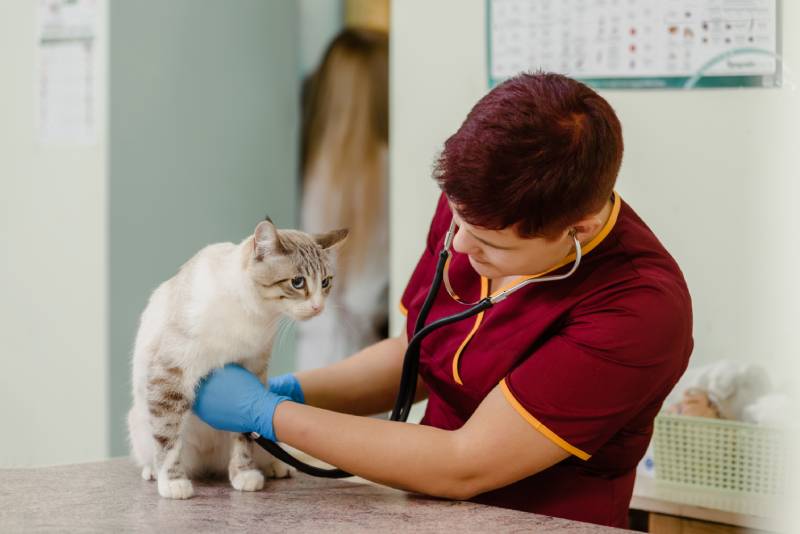
11. Dehydration
Proper hydration is critical for healthy felines, but many indoor cats don’t drink enough to stay in top shape, which can contribute to urinary tract and kidney problems. Dehydrated cats often show signs such as lethargy and dry mucous membranes. A 10-pound cat should drink about 1 cup of water daily, which is about 1/2 cup of water for every 5 pounds of kitty. Cat fountains encourage cats to drink more, and adding more wet food to your cat’s diet can also do the trick.
12. Feline Lower Urinary Tract Disease (FLUTD)
Urinary tract problems are relatively common in cats, including urethral blockages, cystitis, and bladder inflammation. Bladder stones and cystitis can cause urethral obstructions, which are considered veterinary emergencies. Overweight male cats are at particular risk of developing urethral blockages.
Older female cats and pets with diabetes and kidney disease are particularly vulnerable to developing bacterial urinary tract infections. Other common signs of FLUTD include peeing outside the litter box and only producing small amounts of urine.
13. Nutritional Deficiencies
Cats can sometimes become lethargic if they’re not getting all the nutrients they need. Commercial products that meet American Association of Feed Control Officials guidelines are great choices, as they provide cats with nutritionally balanced diets. Cats that don’t get enough taurine are at increased risk of developing HCM, which often leads to fatigue.
Cats with intestinal problems such as inflammatory bowel disease often don’t absorb nutrients terribly well, sometimes leading to nutritional deficiencies caused by malabsorption. Common signs of the condition include weight loss, diarrhea, and appetite changes.
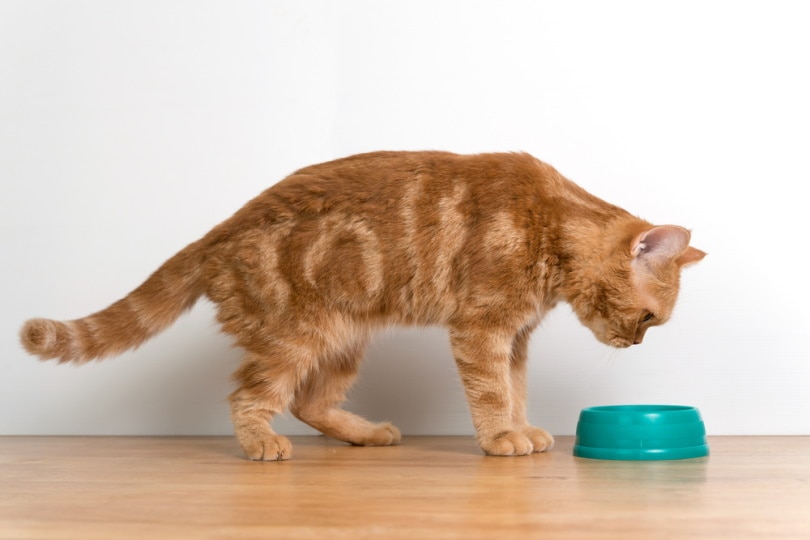
14. Inflammation
Inflammation is essentially the body’s way of responding to irritants and injuries. The body detects a problem, unleashes an inflammatory response, and infection-fighting white blood cells rush to the area. Bacteria, fungi, and viruses can all cause inflammation, as can scrapes and cuts. Inflamed areas are often red, swollen, and warm to the touch.
Organs can also become inflamed; cystitis is an inflammation of the bladder. Inflammation is a sign that the immune system is in overdrive. Cats often appear fatigued when dealing with inflammation, as most of their energy is tapped for the immune response.
Conclusion
Lethargy is never normal in cats. It’s almost always a sign that your companion feels a bit under the weather, but that doesn’t necessarily mean you’re dealing with an emergency or a severe disease. Recently vaccinated cats sometimes need more rest the first few days after receiving their shots, and cats who are fighting off infections like colds often become lethargic as well. Because lethargy can have many causes, it’s important to have your cat evaluated by a veterinarian, particularly if your pet loses interest in food or exhibits other signs of illness.
Featured Image Credit: medveda, Shutterstock







